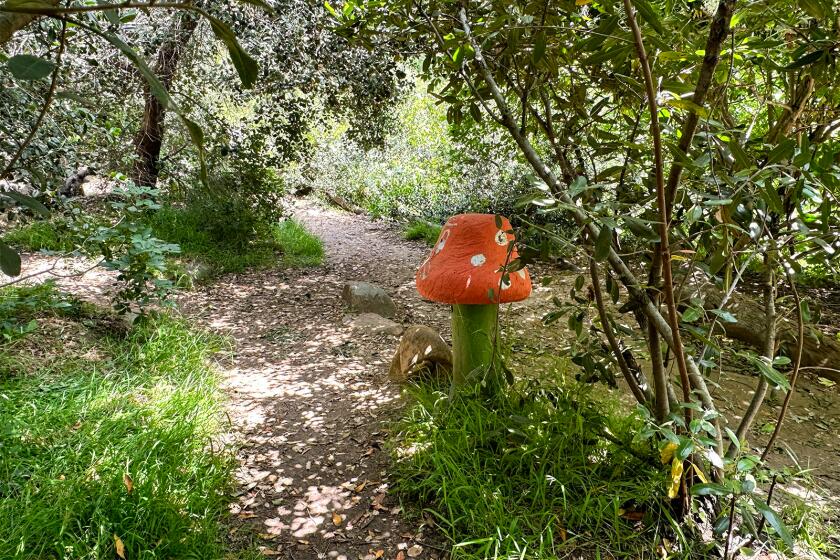They swapped their Newport Beach lawn for a lush, low-water landscape
Despite their proximity to the ocean, Newport Beach homeowners Peggy Pugh and Jim Gula say that temperatures have escalated in their Dover Shores neighborhood over the past five years.
“It didn’t use to be this hot and dry,” Pugh says. “It was hard to keep our yard looking good. Increasingly, it became impossible for us to keep our lawn looking like green, healthy grass.”
When the Municipal Water District of Orange County implemented a Turf Removal Program (which has since been exhausted) in 2015, the couple decided to rip out their lawn and replace it with something that required less water.
Pugh had already started adding drought-tolerant California natives to their yard in sections. This was her chance to transform the yard on a larger scale and save water in the process.
After experimenting with California natives, Pugh knew that she wanted something tailored that would look good year round.
Working with Ryan Diamond of The Backyard nursery in Costa Mesa, the couple removed the lawn and parking strip, added a decomposed granite path framed by sunset pebbles, and planted hardy plants from Australia, South Africa and California.
Well-established cypress, mallow, pine and manzanita trees stayed and colorful fragrant plants were added: purple butterfly bush, Pink Breath of Heaven (Coleonema pulchellum) crimson Erica speciosa, blue Ceanothus ‘Centennial,’ Lion’s Tail and several types of grevillia including Peaches and Cream, Pink Midget, and Jade Mound.
Two different species of kangaroo paws — Pink Pearl and Bush Dawn — add height — and the droopy shrub Acacia cognata, dubbed “Cousin Itt” for its hairy appearance, adds texture and a sense of fun.
“These plants are light and airy and maintain their shape,” Pugh says. “It’s possible to have a structured garden with a lot of color all year long.”
Diamond planted Majorcan Teucrium (Teucrium cossonii), a low growing perennial that forms a mat, on the parking strip and added an apron of succulents at the base of the lone tree.
The new decomposed granite path helps save water and gives the garden a distinctive feel. “I wanted to make it feel like a journey,” Pugh says. It also helps with upkeep. “The older I get, the more aware I am of maintenance,” she adds.
Today, Pugh says they have reduced their water consumption by approximately 75% and gained some fans in the process. Their “work in progress” is a hit with neighbors and wildlife, emphasizing the impact a garden can have on not only the climate but the community.
“Every time I walk out there, I enjoy it,” says Pugh who estimates they spent approximately $15,000 on the makeover. “The hummingbirds and bees and birds are out there all the time. It brings a lot of enjoyment to the neighborhood.”
Show us your garden makeover
We’re highlighting yards and gardens that go from heavy water users to thrifty water sippers. If you’ve given your yard a drought-tolerant makeover, send “before” and “after” pictures to [email protected]. We may include your yard in an upcoming Saturday section.
Twitter: @lisaboone19
For an easy way to follow the L.A. scene, bookmark L.A. at Home and join us on our Facebook page for home design, Twitter and Pinterest.
ALSO:
5 secrets to pampering your perennials now, so they bloom all year long
Before & After: A massive front lawn is transformed into an inviting, low-water landscape
Photos: Ready to scratch the grass? Here are 27 inspiring lawn-free yards







